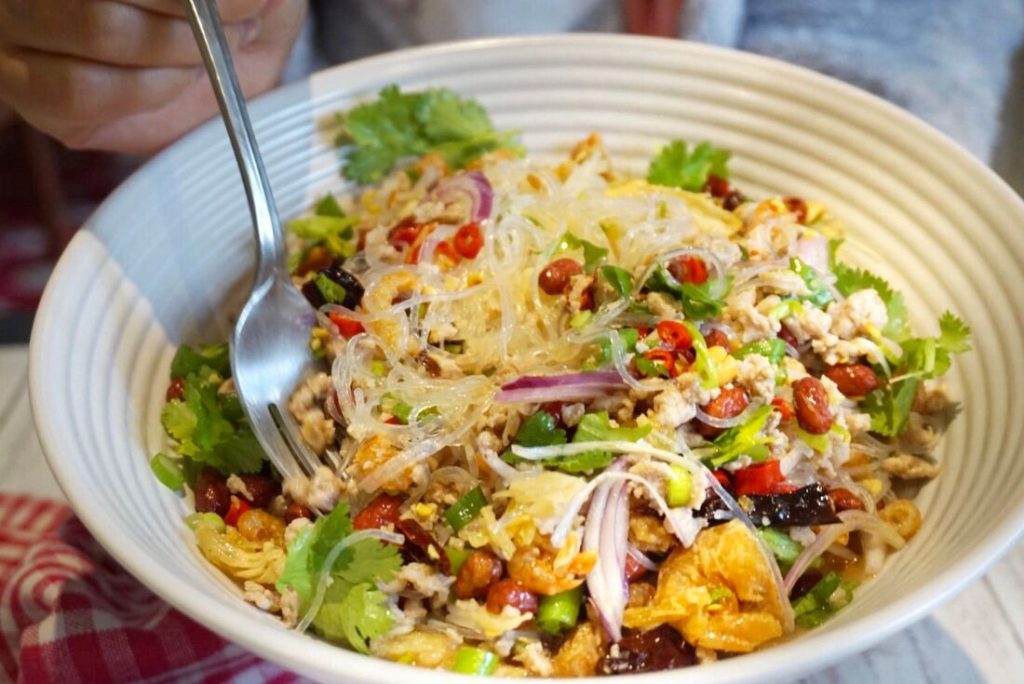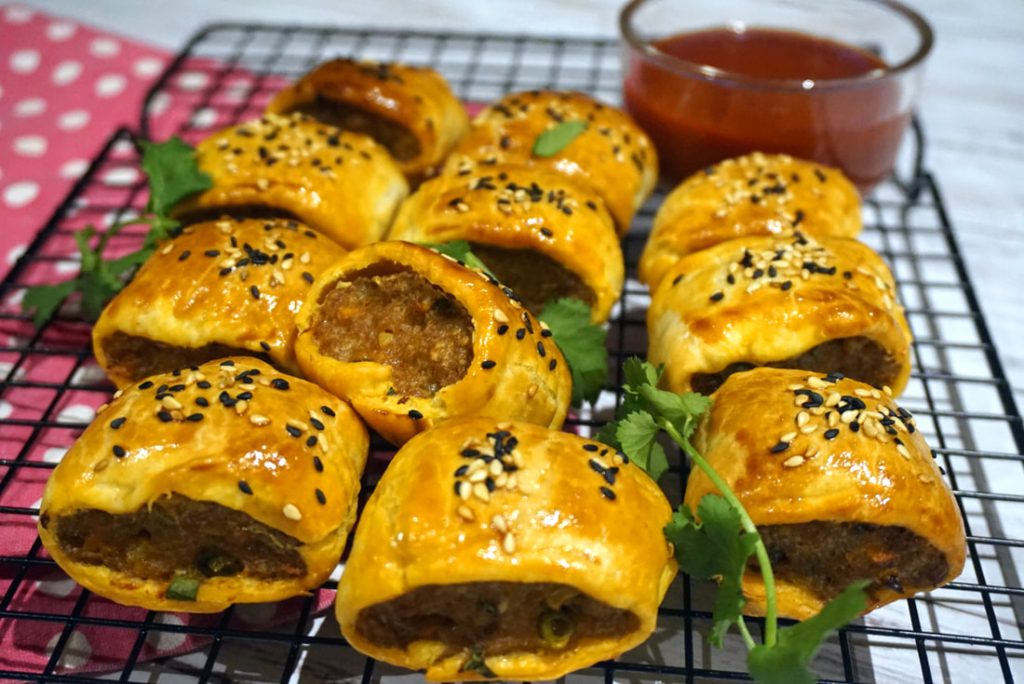Mangosteen and durian and rambutan, oh my! Have you heard of them all? Many people look forward to Thai food when they come to Thailand, but many also unknowingly end up falling in love with the fresh tropical fruits we have on offer. Thailand is home to such a large variety of weird and wonderful fruits – so many flavours, shapes, sizes and textures!
What inspired this blog is my partner’s love for the fruit here. When we moved to Bangkok 7 months ago we were blessed with a house on a street that is frequently visited by travelling vendor carts. Throughout the day we would get people coming by selling ice creams, grilled meats, dim sim, sometimes even noodle soups, but the one he would always look forward to is the fruit cart.
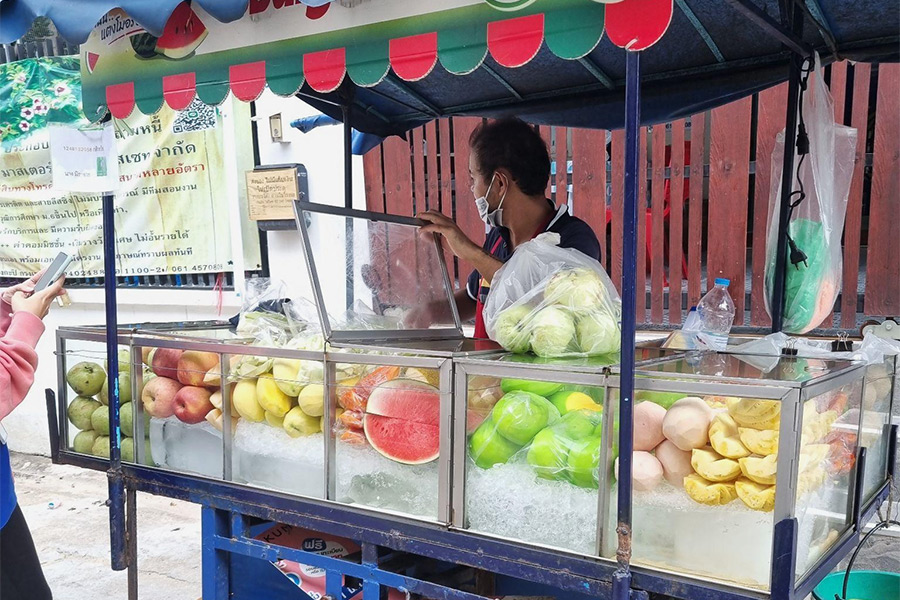
Our local fruit cart man with his colourful selection of fruits.
Our fruit cart guy usually comes just before lunch, we identify him by his unique beeping on his motorcycle ‘beep beep beepbeep’. In his glass display there would be a variety of seasonal fruits sitting on a bed of ice – red, green, yellow, it’s always so colourful! After we make our pick (which is usually sour mango, guava or rose apple and sometimes an extra roasted coconut for me) he chops them up into smaller pieces and asks if we want any ‘Prik Gleua’.
‘Prik Glua’ – fruit seasoning dips
Just like how a lot of Thai food comes with sauces and condiments there are also dips people often eat with fruits. Not that the fruits here are bland but the addition of a bit of saltiness and spiciness can really help balance out the sourness and sweetness of the fruits (and add a little extra something!). I personally cannot eat sour green mango without dipping it into ‘Prik Glua’ to soften the sourness. Each person will have their own favourite combinations so be sure to give them all a try with different fruits.
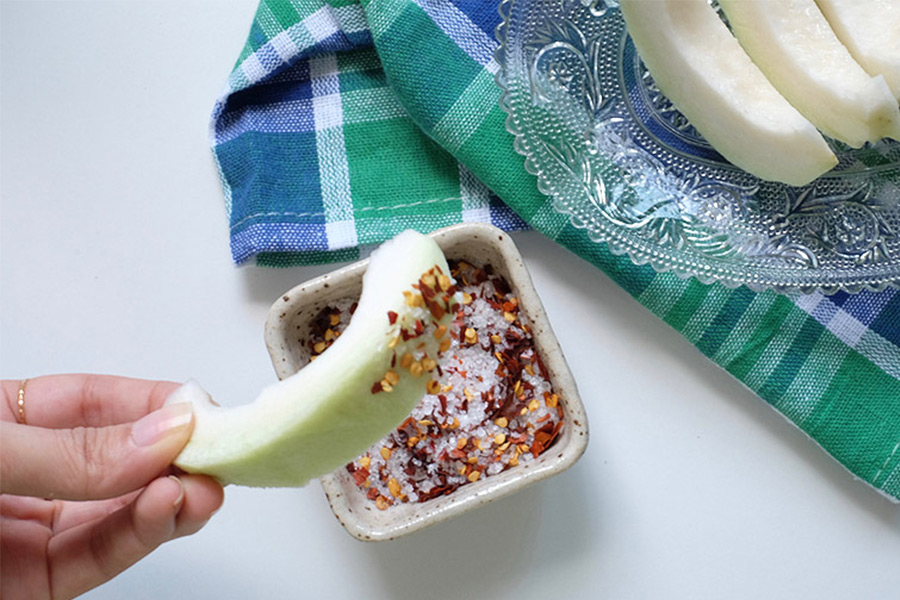
Dipping fruit in delicious Prik Glua (Image source |New Malaysian Kitchen)
The dips I commonly see from fruit carts are a combination of these ingredients :
- Prik Glua – sugar, salt and chilli flakes
- Prik Glua Sod – sugar, salt and pounded fresh chillies
- Prik Kapi – sugar, kapi (shrimp paste) and chilli flakes
- Buay – sugar, salt and plum powder
(Note: Prik means chilli and Glua means salt in Thai so Prik Glua literally means chilli salt in Thai!)
Our pick of fruits you should try in Thailand
Everyone will tell you that you have to try the ‘stinky fruit’ durian when you come to Thailand (which you should), but there’s also so much more to discover! The availability of these fruits will depend on the time of the year and some might only be found at markets or grocery stores. This list is just some of our personal favourites, we hope you’ll give them all a try!
Mamuang Rad (a variety of green sour mango)
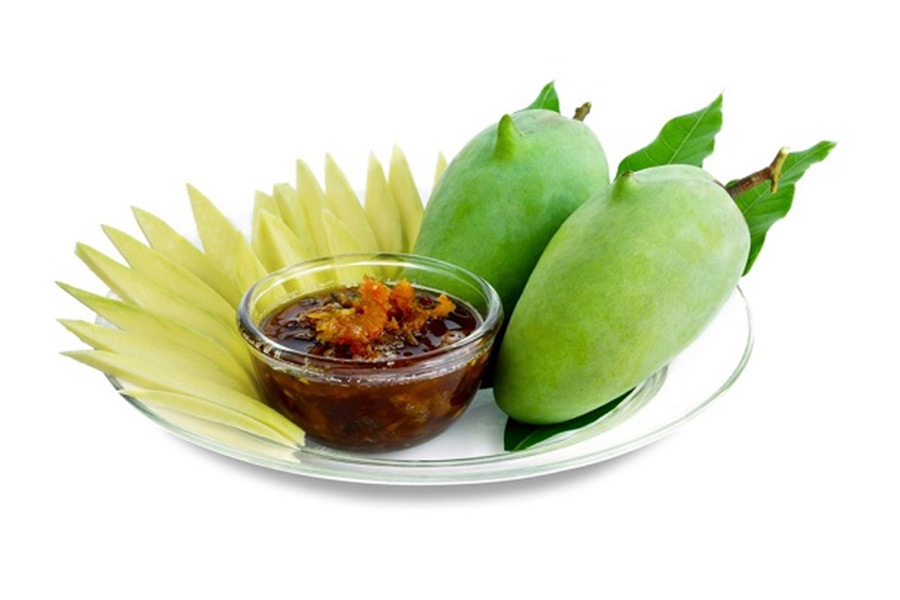
Mamuang Rad with sweet fish sauce dip (Image source |ARDA)
Unlike the golden ripe mangoes that are creamy and sweet and often eaten with desserts like ice cream and sticky rice, Mamuang Rad is a variety of mango that is eaten when unripe and still green. They are quite sour and have a crispy crunchy texture and are perfect for dipping in sweet, salty and spicy sauces. I’ve also seen green mangoes used instead of green papayas in spicy salads.
Farang (guava)
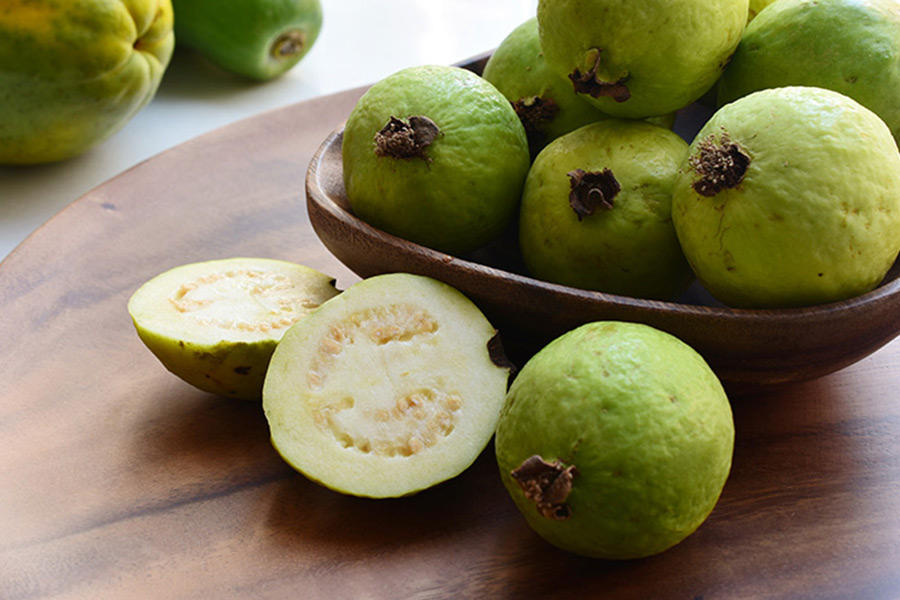
The Farang fruit (Image source |Gourmet and Cuisine)
Usually easily found in fruit carts all year round, Farang is one of the fruits I regularly have in Thailand. It’s slightly sweet and has a good crunch that is similar to that of a pear. The green peel as well as the little seeds inside the white flesh are often not removed, Farang goes perfectly with Prik Glua.
Fun fact! The word Farang also means a Western foreigner – our fruit cart man always jokes about how my partner, a Farang loves Farang!
Chompoo (rose apple)
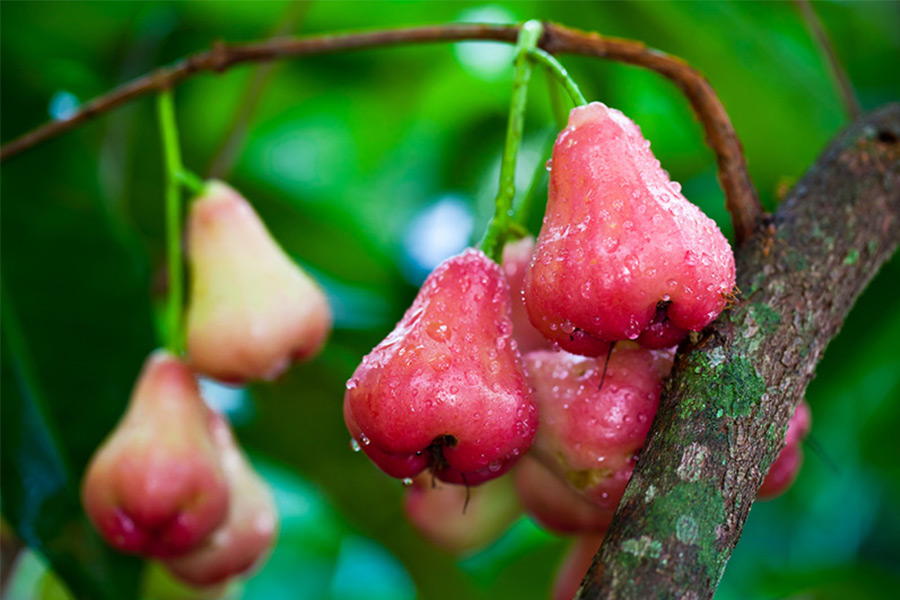
A Chompoo tree (Image source |Kapook Health)
Although the look slightly resembles a sunburnt nose with hairy nostrils, Chompoo is another of my favourites. It’s sweet and juicy yet still has a good crunch when biting into it. The juiciness and the light fruity floral taste makes it very refreshing on a hot day!
Mungkhut (mangosteen)
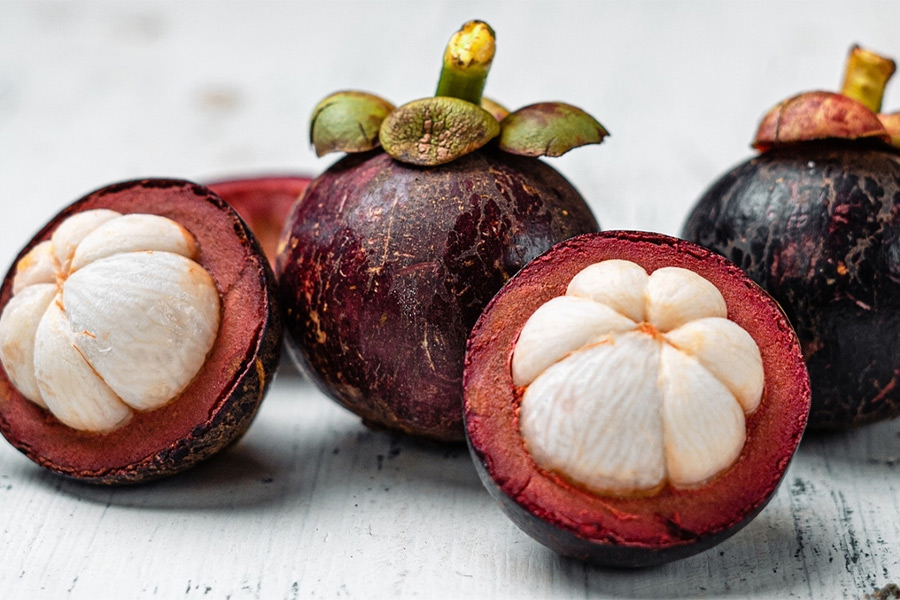
It’s called mangosteen but looks nothing like a mango! (Image source |Mae Fah Luang)
A rainy season fruit available around June, these are usually found only at markets and not in fruit carts. Inside the thick purple shell, the fruit comes in segments similar to that of mandarins but has a soft creamy texture. It is sweet, slightly sour with a bit of tartness – delicious!
Ngor (rambutan)
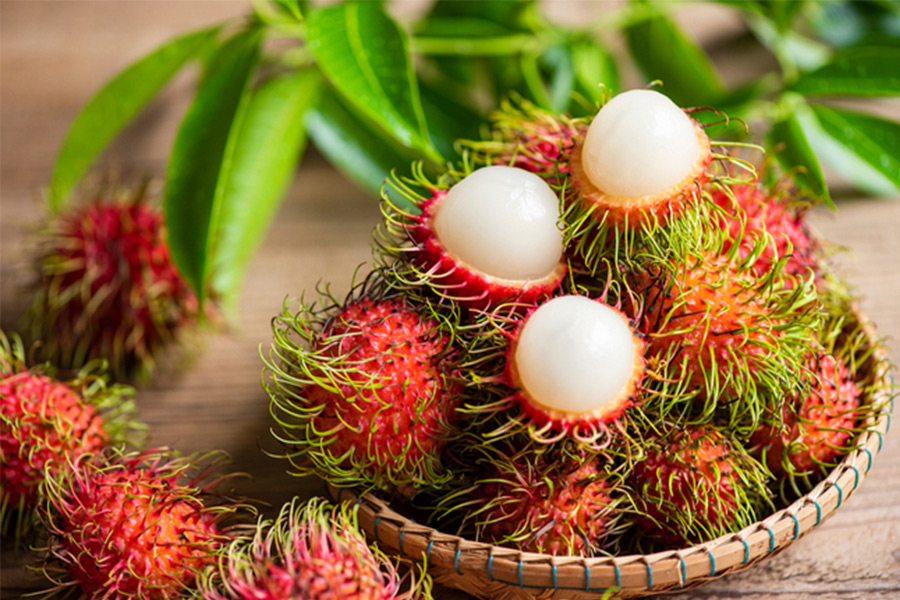
The exterior might not look inviting but what’s inside is absolutely delicious!
(Image source |PobPad)
From the outside Ngor looks a little scary with its hairy appearance, but once you cut it open you’ll be met with very sweet and soft flesh that is similar to lychees. My favourite way to eat rambutans is to peel and remove all the seeds (there’s only one big one) and freeze it until slightly frozen. With the fruit being readily available at the end of summer in May, the slightly frozen fruit makes a very good popsicle substitute on a hot day!
This list will be continued in Part 2 where we will explore more of the weird and wonderful fruits you can find in Thailand. Which fruit are you most excited to try?
Article By Oun V.
‘
References
Food MThai
Baan Lae Suan


